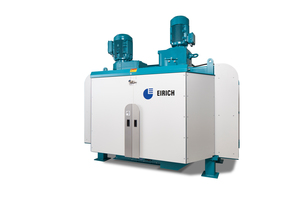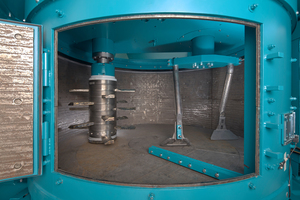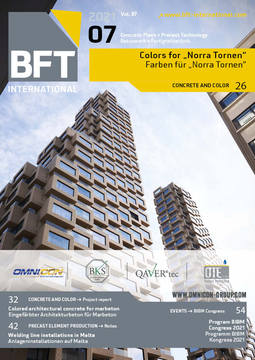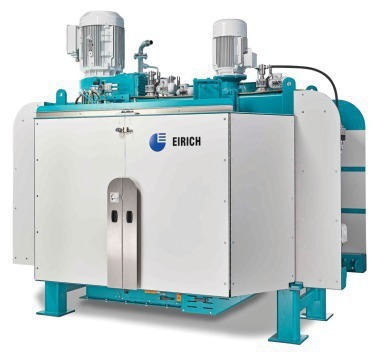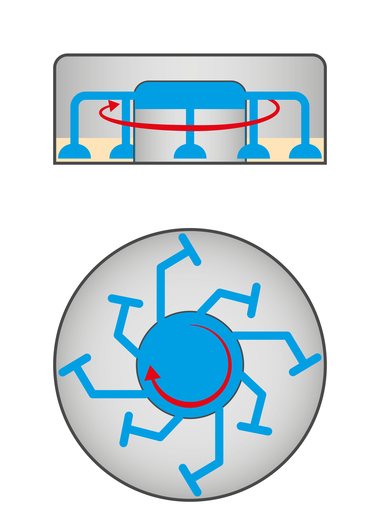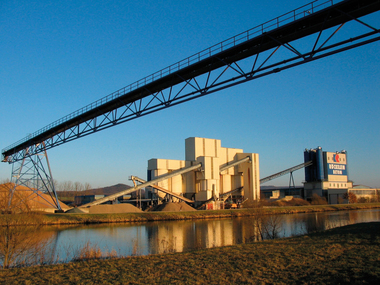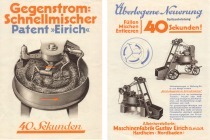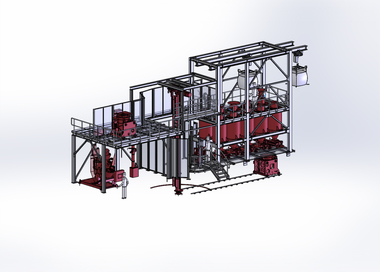Eirich mixer for core concrete installed at Georg Huber Betonsteine
The quality requirements placed on concrete products – such as pavers, slabs, block steps, palisades or masonry blocks – are increasing continuously. Whereas functionality used to be the only criterion in the past, esthetic requirements are often the decisive factor today when it comes to purchasing a specific product. It is also important in this regard to minimize variations in appearance over extended periods of time. According to the manufacturer, this is where the Eirich mixer offers system-related advantages. It is also why Georg Huber Betonsteine GmbH, based in the Bavarian town of Altomünster, has decided to use an Eirich mixer for the processing of core concrete.
Concrete products typically consist of two layers or two different types of concrete: the facing concrete, which is intended to provide an appealing surface, and the underlying core concrete. The facing concrete is responsible for the color and appearance of the product, whereas the core concrete provides the strength of the concrete block. Precast producers have known for around 50 years that the processing of facing concrete poses a challenge; voids in the facing layer are tantamount to rejects. As a result, numerous producers use Eirich mixers for processing facing concrete, whilst other mixing systems are often used for the core concrete. There has been a recent trend, however, to also use the Eirich mixer, one of the best mixing technologies available, for the processing of core concrete.
Core concrete is an important parameter
Core concrete of the highest quality – Georg Huber Betonsteine has chosen it. The company believes that too little attention is paid to the core concrete and that it is an important parameter for the profitability of the products. The facing concrete has been processed using an Eirich mixer for 17 years. The company rightly claims, “Huber Betonwerk – synonymous with quality, innovation and progress in concrete products for over 100 years. The ever-growing demand for new products, surfaces, colors and designs requires ever new avenues and ideas.”
Eirich’s scope of delivery included a D23-2 mixer (with an effective volume of 2,250 l) as well as scales, conveying equipment and silos. Assembly of the unit was completed by the customer. The mixer was put into operation in March 2021. After only a short period of time, it was found that approx. 10 l more mixing water per m³ can be added to the concrete due to better material disintegration without causing bulging of the products. Similarly, the moisture content of the dry mix only needs to be determined for every second mixing process; the next mixing process is performed with a dry mixing time of 5 s while adding the amount of water determined for the previous mixing process. This results in a significant increase in production, as just under a minute is saved on every second mixing process – without any downsides.
Switching to an Eirich mixer for the processing of core concrete will enable Georg Huber to implement an even better and more uniform production process, to develop additional new products, and to further strengthen the competitiveness of the family-operated business.

